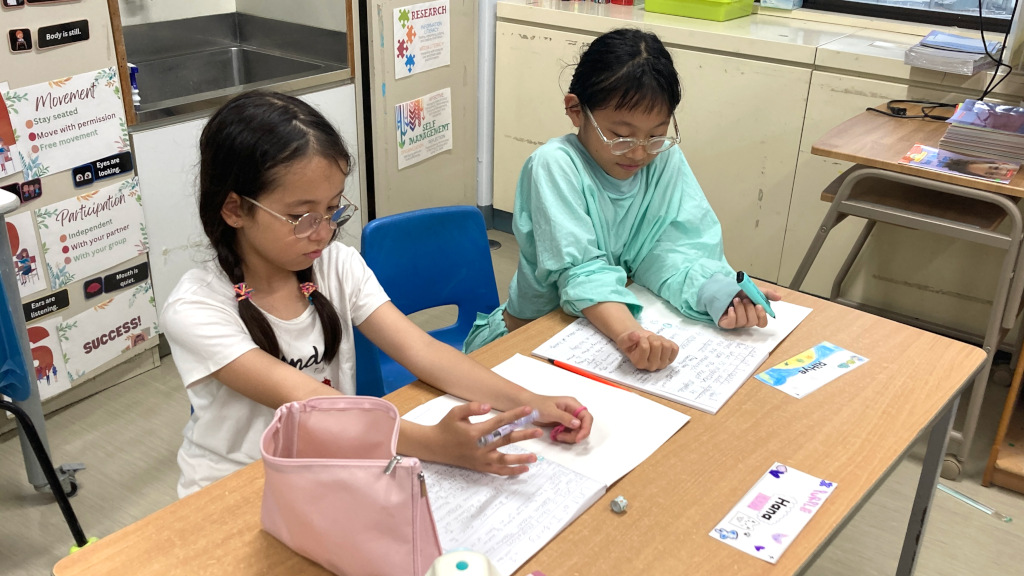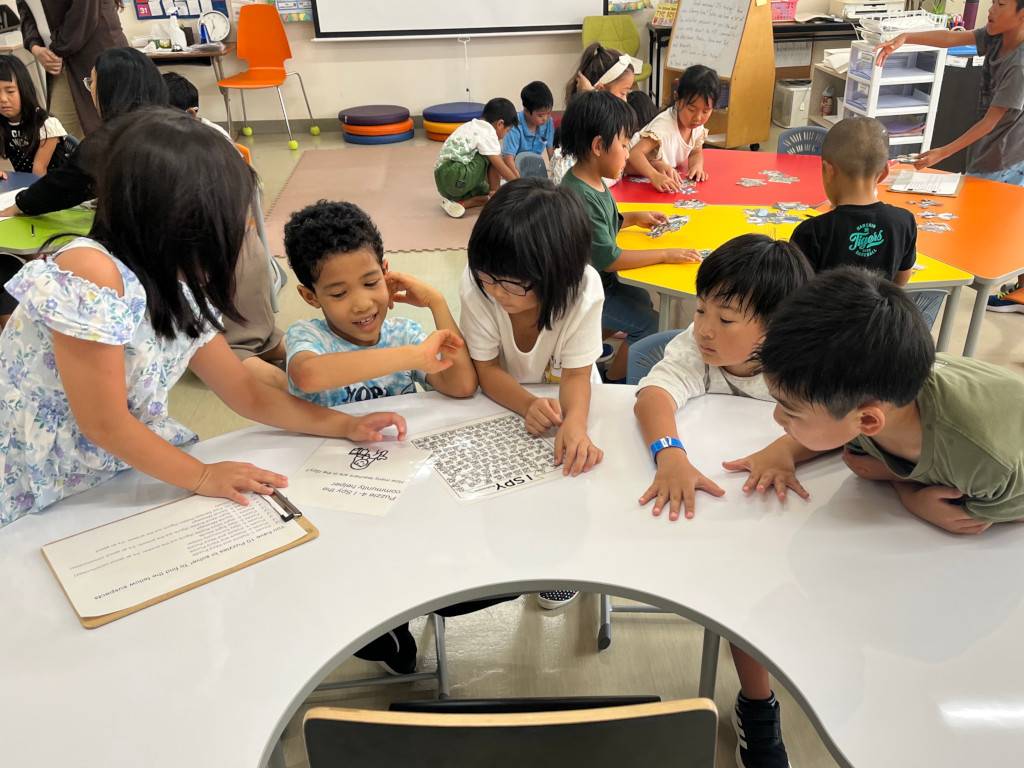

Languages are essential tools for teaching and learning. They are also expressions of one’s culture and identity. In an international school delivering an international curriculum, command of English is the primary key to accessing information and communicating internationally. Language is the medium through which all subjects are taught.
Therefore…
- All students at HIS have the opportunity to become proficient in English and Japanese.
- All students should have the opportunity to learn Japanese, the language of the host country.
- All students are encouraged and assisted where possible to maintain the study of their ‘mother tongue’.
- The language of instruction at Hiroshima International School is English.
- Students entering our school with limited proficiency in English will receive appropriate additional support.
- The teaching of language is the responsibility of all teachers.
Our Beliefs and Values in language
At Hiroshima International School it is necessary not only to learn language, but also learn about language and through language. The strands of oral, written and visual communication are learned across and throughout the subject areas.
Language learning plays a major role in our school as the language of instruction may not be the student’s first language. Research has shown that the development of mother-tongue language is crucial for cognitive development and in maintaining cultural identity, and we encourage continued learning in the mother-tongue language outside of school to aid English language learning.
- Our students’ multilingualism is a fact, a right and a resource.
- Cognition, language and culture develop interdependently. Students’ languages and cultures are valuable resources to be tapped and incorporated into schooling.
- Language acquisition outside the school environment is important as it provides context for the learning in the classroom and opportunities to practice the language in real-life situations.
- Inclusion in the mainstream is preferable, when appropriate, to exclusion/pull-out: Students benefit from peer-to-peer interaction, are less likely to fall behind and the vocabulary taught is relevant to the subject content.
- Students’ development of social, instructional, and academic language, a complex and long-term process, is the foundation for their success in school.
- Students’ development of academic language and academic content knowledge are inter-related processes. Teaching language cannot be achieved in isolation in language classes-it is everybody’s job to teach language skills within and through their content area.
- Students’ academic language development in their native language facilitates their academic language development in English. Conversely, students’ academic language development in English informs their academic language development in their native language.
- Students develop language proficiency in listening, speaking, reading, and writing interdependently, but at different rates and in different ways.
- Students learn language and culture through meaningful use and interaction. They use language in functional and communicative ways that vary according to context.
- Students’ access to instructional tasks requiring complex thinking is enhanced when linguistic complexity and instructional support match their levels of language proficiency.
Our Practice
In our school the focus is not only on language for its own sake, but also on its application across the subject areas and throughout the transdisciplinary programme of inquiry. Language is a major connection between home and school as well as with the wider community.
Students need many opportunities to listen and speak in order to communicate effectively and to establish and maintain relationships. Discussion in the classroom is fundamental to promoting language learning.
Teachers at HIS structure teaching/learning situations so that students have “opportunities for success”, this includes using techniques that support students during the communication process and bridging the gaps when meaning is not able to be expressed.
Additional language teachers and teaching assistants play an important role in collaboration with other classroom teachers and single-subject teachers, reinforcing, supporting and extending the classroom work.
English as an Additional Language (EAL)
Non-native speakers are supported in reaching proficiency in English by receiving in-class support. Smaller groupings of students in classes provide new students with a supportive, protected environment in which they can try out their language skills and develop confidence in their abilities. Differentiating the classroom environment to support language learning occurs either in the student’s classroom or in a smaller group situation.
In their regular classroom situations, teachers are aware of the EAL students’ needs and modify or differentiate lessons accordingly. In this way the student not only achieves competency in meeting academic goals, but is also able to participate in school culture and become a fully integrated member of our community.
Our English Language Learning programme includes:
- An initial assessment of a student’s English level, for most students, in the skills of speaking, listening, reading and writing.
- Determination of the kind of support the student needs, i.e., in-class support, small group instruction, or specific skill focus.
- Some initial, intensive language focus on the basics of English, such as terminology like: letter, word, sentence, paragraph, essay; sentence structure; descriptive words; verbs; greetings; calendar/time vocabulary
- Support for literacy depending on the grade level
- An environment where English Language Learners feel comfortable and safe so that they are willing to take risks in learning the new language
- A way to monitor the student’s progress and needs through English language testing, observing performance within the classroom or small group, and skill development
- Affirmation of the student’s home language and continuous improvement of it outside of school
- More appropriately leveled books, books on CD, and videos in English
EAL Fee
Students entering HIS who need a high level of English language support have an additional EAL fee. The EAL fee is not designated to a specific service. The HIS staffing structure (Full-time teaching assistants in every Primary classroom and English language acquisition classes throughout the Secondary) is designed to enable HIS to meet the needs of our EAL learners in flexible ways. The EAL fee is in place to mitigate, in part, the staffing expenses associated with this structure. The EAL fee is in place for three years as we find that it generally takes at least a few years for students to develop their English language skills to a level where they no longer require a high level of support. Of course, all of our students are unique individuals with different developmental needs and linguistic backgrounds so each child’s English language proficiency will develop at different rates. Our EAL fee is designed as a simple system to help us provide the language support we need in flexible ways.
